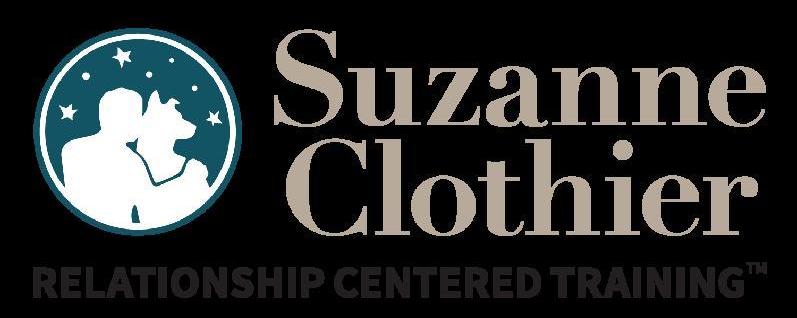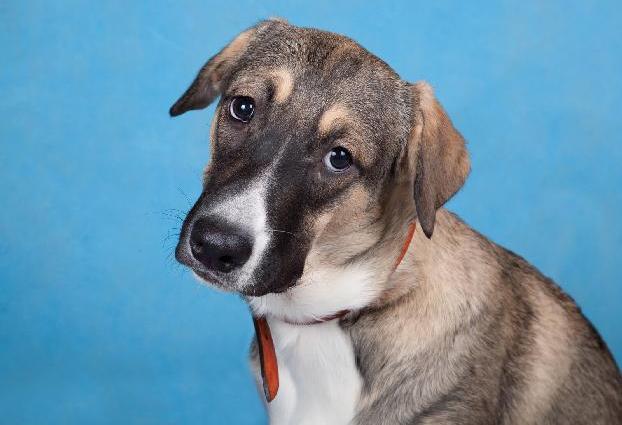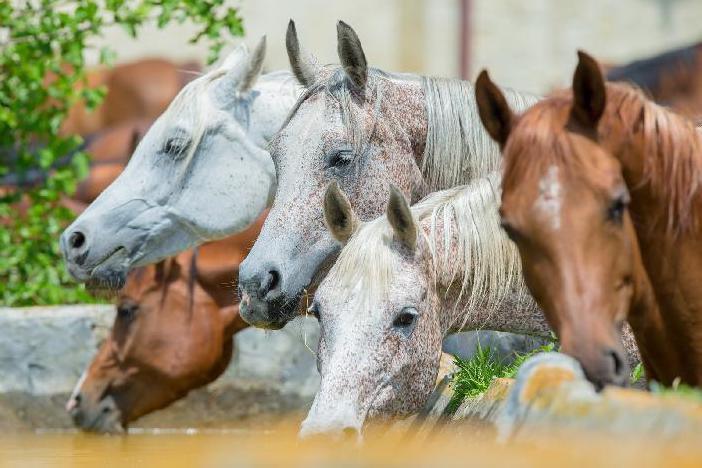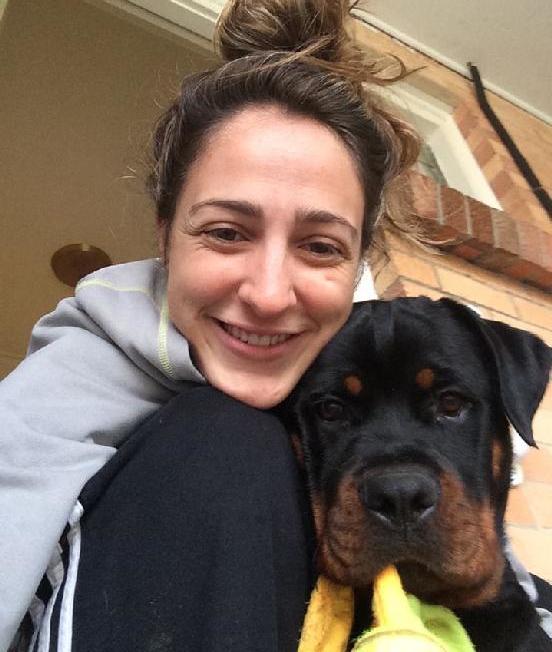
10 minute read
benefits for the dogs
t r a i n i n g The Need for Safety in Learning
Suzanne Clothier discusses Maslow’s Hierarchy of Needs and the importance for those working with animals to honor their need to feel safe, thus ensuring they retain the ability to think and learn
Advertisement
Afew years ago, in midFebruary, I made a trip that brought into vivid focus the wisdom of Abraham Maslow’s philosophy. Maslow was a prominent psychologist in the 1940s and considered the father of humanistic psychology. I feel his work has great value for trainers of today once they are ready to move past behaviorism. The framework of Maslow’s humanistic philosophy aligns well with my Relationship Centered Training™ (RCT).
Like many of his colleagues, Maslow was in search of a model that might explain motivation, why an organism would devote energy and resources to specific behavior(s). He proposed a Hierarchy of Needs whereby the most basic need(s) must be met before the animal had the resources or even interest for meeting higher level needs. His philosophy is actually more nuanced and complicated than that brief summation, but for this article, let’s keep it simple.
In his book Motivation and Personality (1954, 1970), Maslow differentiates between needgratification and needfrustration; both have consequences observable in behavior. This approach has proven immensely helpful to me in moving past pure behaviorism and into a more nuanced understanding of intrinsic and individual motivations. Those familiar with my Relationship Centered Training approach will not be surprised, as I am deeply interested in what I call the Ethology of the Individual™. To my way of thinking, applying training theories and techniques without an understanding of the individual is not only less than effective but disrespectful as well.
Here are Maslow’s (1970) own words: “When we talk about the needs of human beings, we talk about the essence of their lives. How could I have thought that this essence could be put to the test in some animal laboratory or some test tube situation? Obviously, it needs a life situation of the total human being in his social environment.”
Indeed, seeing our animals within the full context of their lives is important, and guides us to asking the interesting questions that lead to interesting answers.
The Hierarchy of Needs
At the very bottom of Maslow’s Hierarchy of Needs are the basic needs that, when met, allow us to maintain homeostasis and to sustain life. This level is often referred to rather sloppily as “food, water and shelter,” though it is far more nuanced than that. Most of us would not work with an animal who was freezing or overheated, in pain, lame, hungry, starved, thirsty, or uncomfortable in any way. We work to provide fulfillment of these basic needs so that our animals are comfortable and
© Can Stock Photo / Virgonira If an animal is trying to communicate that he feels unsafe, then some other solution should be found rather than adding pressure through the use of food
healthy. (I do realize that people violate that generalization all the time, sometimes deliberately by withholding food or water in the name of “training” or using techniques or equipment designed to be painful, or working animals who are lame or in pain.)
Assuming we’ve met the basic needs, the next level in the Hierarchy of Needs is safety – physical safety, psychological/emotional safety, and social safety. And here is where even the most wellintentioned among us can fail the animals we are trying to help if we do not recognize if or when they do not feel safe. When we do not meet the animal’s need for safety, we undermine our relationship with him, as well as any attempts to train, educate or ask for performance.
Environmental Influences
It is worth noting that in environments where basic needs cannot easily be met, it is easier to capture feral animals. An animal who is starving or dying of thirst or needs shelter will move into potentially unsafe situations in order to satisfy the basic need(s). By contrast, in a resource rich environment, if the animal has ready access to food, shelter and water, he may consistently avoid any situations that make him feel unsafe,
© Can Stock Photo / raywoo The need to feel safe is often uppermost in an animal’s mind, not a human’s needs or expectations

such as a bowl of food placed in a humane trap.
Likewise, we can artificially elevate a resource to such intensity that an animal may be willing to move past their need of safety. This is a frequent occurrence with intensely food motivated dogs who can be lured into situations they would not enter voluntarily in the absence of food. Whenever we are intensifying the lure or depriving the animal of fulfill


ment of basic needs, we need to rethink our strategies in the light of the need for safety rather than our goals as trainers. As soon as someone recommends, “Get higher value treats!” I am instantly on alert for why that is necessary. If the animal is telling us they feel unsafe, then some other solution must be found, not adding pressure through the use of food.
Maslow speaks of safety hunger when referring to a frustrated safetyneed. I do not know what he might think of our insistence on pushing dogs past their feelings of safety, sure that we are being positive because food is involved, firmly believing that heavy doses of chicken or cheese will turn the tide. To ignore the power of safety hunger is unfair at best; we’d do well to put ourselves into unsafe situations and pay close attention to how we are affected.
Maslow (1970) rightly points out: “Apprehensiveness, fear, dread and anxiety, tension, nervousness, and jitteriness are all consequences of safetyneed frustration. The same type of clinical observation clearly shows corresponding effects of safetyneed gratification (for which as usual we lack adequate vocabulary), e.g., lack of anxiety, lack of nervousness, relaxedness, confidence in the future, assurance, security, etc. Whatever words we use, there is a character difference between the man who feels safe and the one who lives his life out as if he were a spy in enemy territory.”
Three Hours, Two Ladies, a Great Dane and a LOT of Snow
A snowy February day several years ago reminded me for the millionth time that feeling safe is important. It was supposed to be a pleasant threehour drive to the airport, with two pleasant ladies and a charming Great Dane for company. My driver was a professional driver (literally), and she drove with evident skill and care. Food, water, shelter — all


Blending heart & science for the thinking trainer
were in place. My belly was full; my bladder empty. I had a hot coffee in my hands. I was warm and comfortable, with my basic needs fully met. But… I wasn’t feeling safe.
All the good things in place didn’t matter much, other than not adding to my stress. Could the drive have been worse? Sure. I could have had on summer clothing in an unheated vehicle, been with strangers or people I did not like or who scared me. The Dane might have been trying to bite me the whole trip. I might have been thirsty and hungry with a migraine and a full bladder. Or all of the above. The point is that I was warm, comfortable, and with nice folks and a cool dog.
But the icy roads were not under anyone’s control, however nice or skillful they might be. At all times, I could feel the undercurrent of anxiety (what if we slide off the road?) or actual fear (what if that oncoming car that is sliding sideways crashes into us?). At times, it was difficult to pay close attention to the conversation, which often lapsed into shared worry and silence when we hit particularly bad stretches. We were all immensely relieved to arrive in one piece at our destination. Almost magically, as soon as we were safe, our ability to think, breathe, converse and interact normally returned to 100%, though we were all deeply fatigued. Not feeling safe was pervasive, and affected everything, with lingering effects even after the unsafe situation was resolved. This is the reality of stress for us and for our animals.
Honoring the Need to Feel Safe
I have been teaching some aspects of Maslow’s work in my seminars for decades, reminding handlers that if we violate our animals’ need for safety, we automatically infringe upon their ability to learn, to think, and to perform. Feeling unsafe is often at the root of failure of our animals to perform or respond as we think they should. Uppermost in their minds are not our expectations or needs, but that safety hunger, the need to feel safe.
When we push dogs into feeling unsafe – something we can do as easily with treats and praise as with any “correction” – we push them out of balance, out of what I call the Think and Learn Zone. Possibly worse, we push them into a place where they learn that we cannot always be trusted to know when they do not feel safe. In my experience, the lack of safety is one reason why counterconditioning (CC) and desensitization (DS) often fail. When CC or DS are applied as recipes without the understanding of needgratification and needhunger, when used with an animal who does not feel safe, we will miss what the dog in front of us is telling us and not much will change.
Honoring the animal’s need for safety is an important aspect of Relationship Centered Training™ and all humane training practices. I hope that you’ll consider it as important to the psychological health and wellbeing of each animal in your hands. n
An animal who is starving or dying of thirst or needs shelter will move into potentially unsafe situations in order to satisfy the basic need(s). By contrast, in a resource rich environment, if the animal has ready access to food, shelter and water, he may consistently avoid any situations that make him feel unsafe, such as a bowl of food placed in a humane trap.
Reference
Maslow, A. H. (1970) Motivation and Personality. New York, NY: Harper Row
Suzanne Clothier has been working with animals professionally since 1977. Currently based in St. Johnsville, New York, she is well respected internationally for her holistic Relationship Centered Training™ approach to dogs and the people that love them. Her background includes training, instruction, behavior modification, kennel management, temperament assessment, physical assessment and conditioning, early puppy development, class curriculum development, obedience, agility, Search and Rescue, conformation, breeding and more. Since 1991, she has taught workshops and seminars on a broad range of topics throughout the United States and internationally for a wide variety of groups from training clubs to international conferences in 11 countries. An award-winning author of multiple books and DVDs, her book, Bones Would Rain from the Sky: Deepening Our Relationships With Dogs (2002) has received widespread praise from every corner of the dog world, including twice being included in the Wall Street Journal's list of Top 5 Dog Books. She has served on the American Humane Association’s Task Force for Humane Training, the AKC Agility Advisory board, and is currently a consultant for Frankie & Andy’s Place, a senior dog sanctuary in Georgia. She has also developed multiple assessment tools CARAT™, RAT™ (Relationship Assessment Tool), as well as puppy and adult dog tests. These tools have been used by guide and service dog organizations, therapy dog groups, AAIA organizations, shelters and rescue groups, and trainers. In her work as a consultant to guide dog schools, her Enriched Puppy Protocol™ served as the structure for the updating of their puppy raising programs. Since 2007, more than 10,000 puppies have been raised in programs built around The Enriched Puppy Protocol™. Meanwhile, with fellow trainer Cindy Knowlton, she developed CCC: Connection, Cooperation & Control™, a puzzle-based program that builds joyful relationships between handlers and dogs.
Looking for Something?
Currently holds over 3,500 articles, studies, podcasts, blogs and videos and is growing daily!
The


petprofessionalguild.com/Guild-Archives
CATEGORIES INCLUDE:
s canine s training s feline s business advice s equine s trends s avian s PPG news s animal behavior s book reviews s piscine s member profiles s pocket pets s opinion










